
Image credit: Pexels/Kubra Tokur
How to make radiators more efficient
With the chilly weather starting to set in, we’re looking to hunker down at home and crank up the cosy.
But with the cost of living still biting, it’s more important than ever to ensure we’re being smart with our heating, including our trusty radiators.
“As heating costs continue to rise, we need to make our homes as energy-efficient as possible. One of the best ways to do this is to ensure that your radiators are operating at peak efficiency,” explains Jon Bonnar, managing director at Cotswold Energy.
Thankfully there are some easy, cash-friendly ways to help keep your radiators working as best as they can to ensure your home stays super toasty during the winter months.
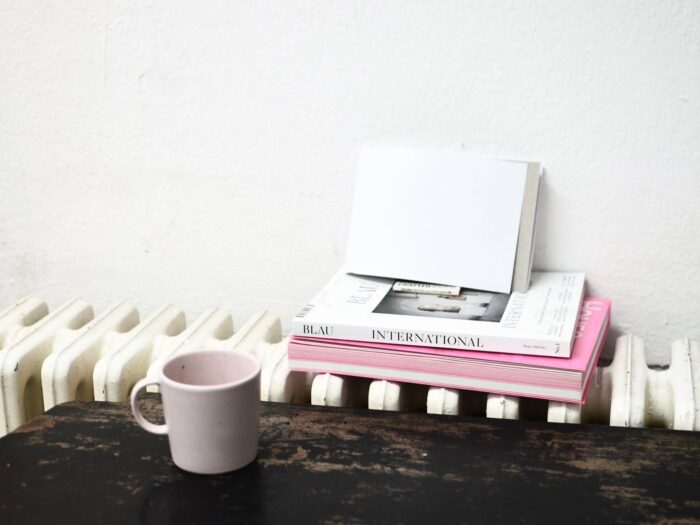
Bleed your radiators
Bleeding radiators is a vital step for ensuring your heating is running efficiently this winter. Trouble is, many of us don’t actually know how to do it.
Not only has it been found that fewer than half of millennials can’t perform this basic household task, other research has put it at the top of the most searched-for DIY queries.
According to stats from the Manufacturer’s Association of Radiators and Convectors (MARC), nearly a third of homeowners (27%) haven’t bled their radiators within the past year, while over one in 10 (13%) have never done it.
But it’s actually way easier than you might think.
“When air bubbles are trapped inside a radiator, they can prevent the hot water from circulating properly, which can make the radiator less efficient,” explains Bonnar.
“Bleeding a radiator will remove these air bubbles and allow the hot water to circulate more freely, which will improve the heating efficiency of the radiator and help to reduce overall energy consumption.”
To bleed a radiator, Bonnar says you’ll need a radiator key.
“Simply open the bleed valve at the top of the radiator and let the air out until water starts to come out,” he adds. See, simple.
MARC has created an easy step-by-step guide to help more people correctly bleed their radiators, which is available here.
Install radiator reflectors
These are panels that can be fitted behind radiators to reflect heat back into the room, rather than allowing it to be lost through the walls.
“Radiator reflectors are really cheap to buy, can be found at most DIY and home retailers nationwide and are easy enough to install yourself without the need of a professional,” Bonnar explains.
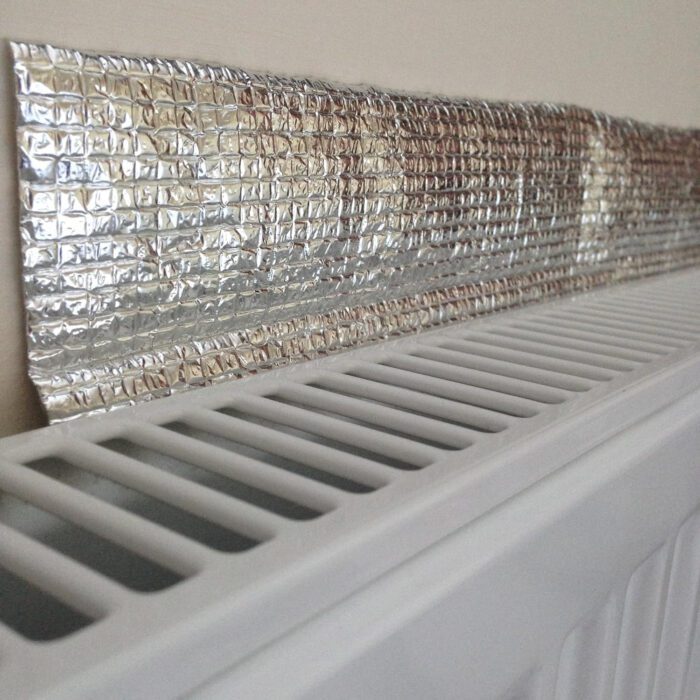
Give them a clean
Sure, dusting down the back of your radiators might not be top of your must-do list, but giving them a good once-over can significantly improve their energy efficiency.
“Dust build-up can prevent heat from being distributed throughout your rooms, meaning less efficiency and higher bills to get your home to the same temperature,” explains Andy Kerr, founder at BOXT.
Be sure to clean your radiators as often as you would clean any other part of your home to help tackle the problem.
Ditch the radiator covers
They may look aesthetically pleasing, but while putting a cover on a radiator could be a win in the style stakes, it could actually hinder how well it’s working.
“If you desperately want to cover the radiator or do so for safety reasons, then make sure that any cover you use is designed specifically for radiators, and will still allow the radiator to safely emit heat,” suggests Nicholas Auckland, heating expert at Trade Radiators.
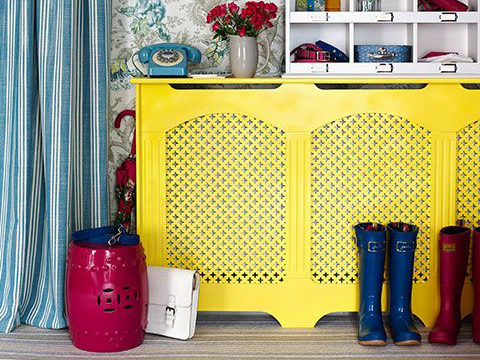
Rearrange the furniture
Make sure you don’t have any furnishings blocking your radiators, as having something like a sofa in front of them could waste up to £100 a year on energy bills.
“Sofas and other big items take in the heat and block it from being expelled around the room. If there’s no other spot for your furniture, I recommend moving it a couple of inches out, away from the radiator,” Auckland explains.
Check your curtain length
Room feeling chilly? Make sure your fancy curtains are not blocking the heat flow from your radiators, and helping to direct heat out the window.
“Your curtains should be long enough to reach the bottom of your windows but not too long that they touch your radiators,” Auckland explains.
Fit energy-efficient smart radiator valves
Energy-efficient smart radiator valves can automatically adjust the heat output of the radiator based on the temperature of the room.
“This can help to prevent your radiators from overheating and wasting energy,” Bonnar explains.
“Some can even be controlled via an app, allowing you complete control of your heating system through your smartphone.” Clever huh?
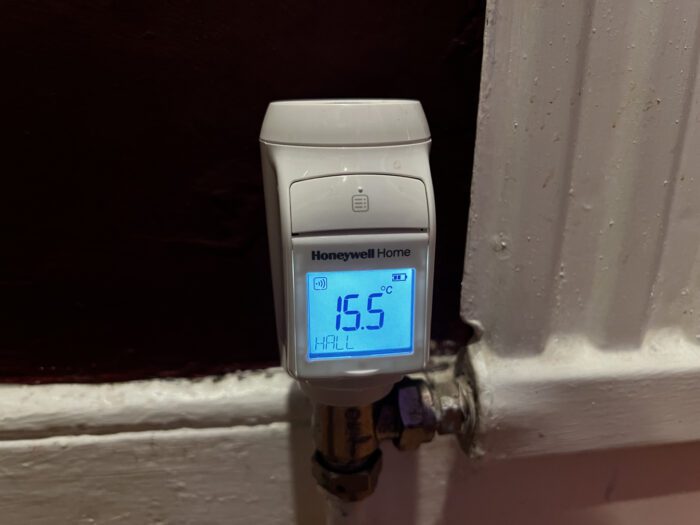
Have your heating system flushed
A bit like a colonic for your home, a flush involves having your system drained to wash out any build-up of sludge or magnetite.
“There are different types of system flush available, and these should only be completed by a professional heating engineer,” warns Kerr.
“Once this is completed, you should get a better performance all round from your system, especially if your radiators or pipework are partially restricted.”
If you’re unsure if your system needs flushing, Kerr says there are some quick ways to check.
“If flushing is required, your radiator will be cold at the bottom and in the middle. This is due to the heat rising above any sludge, and back down again, an effect known as ‘mooning’.” Who knew?
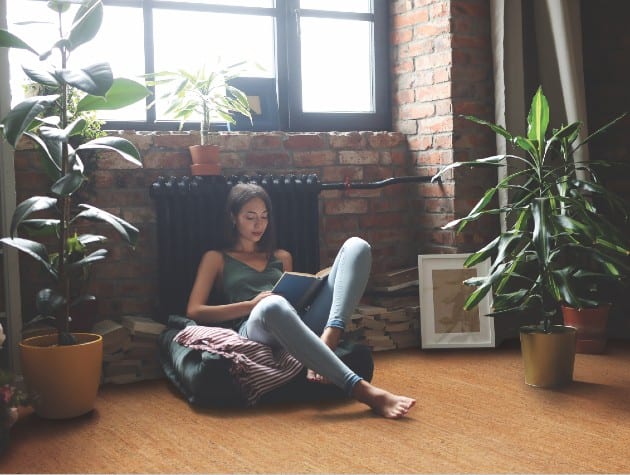
Put a shelf above
Installing a shelf just above your radiator not only works as a design feature, it will also help direct warm air into the room rather than allowing it to rise and get trapped behind curtains or blinds.
“The shelf acts as a barrier, guiding the heat flow into the living space,” explains Nick Duggan, director at the Radiator Centre.
Check if your radiator is suitable for the room
If you want your room to be sufficiently heated, one of the most important things to consider is if the radiator you have is the correct size.
“The area and features of a room can determine what radiator is needed to effectively heat the space,” explains Kerr.
“There are many online guides and calculators that can help with this, working out the BTU (British Thermal Units) of a given room. This measurement is designed to work out how much energy is needed to heat a space.”
Try a radiator fan
These devices attach to the top of your radiator and help to circulate the warm air more efficiently.
“They can be particularly useful in larger rooms or areas that are harder to heat,” explains Auckland.
Assess the room
To keep radiators heating your rooms at peak levels, you can also look at things that improve the overall energy efficiency of a room.
“The less heat you lose, the less you will need to top up with more heat from the radiator, hence any improvements that limit the amount of ‘heat-loss’ from a room are worthwhile,” explains Duggan.
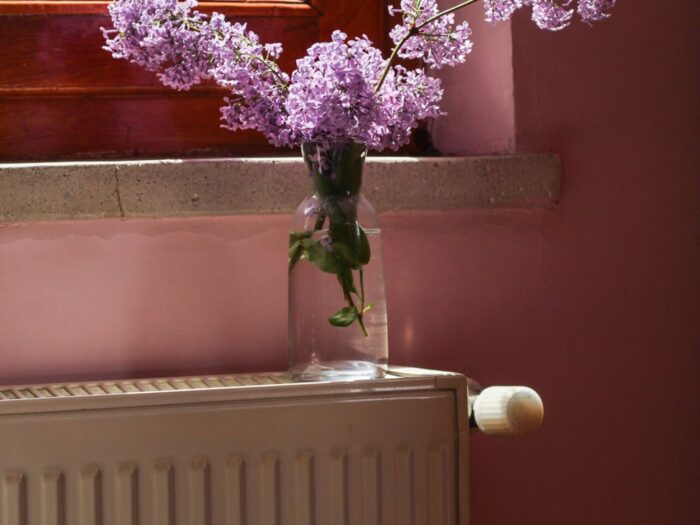
“Filling the gaps around doors and windows helps, as does installing a chimney cushion in the fireplace (20% of a room’s heat can be lost up an open chimney). These measures can all have huge benefits.”
While it may seem that radiators play a minor role in the overall efficiency of your home heating system, neglecting them can have a surprisingly significant impact.
“Taking the time to care for and optimise your radiators can lead to not only cost savings but also a more comfortable and consistently heated home,” Duggan adds.




